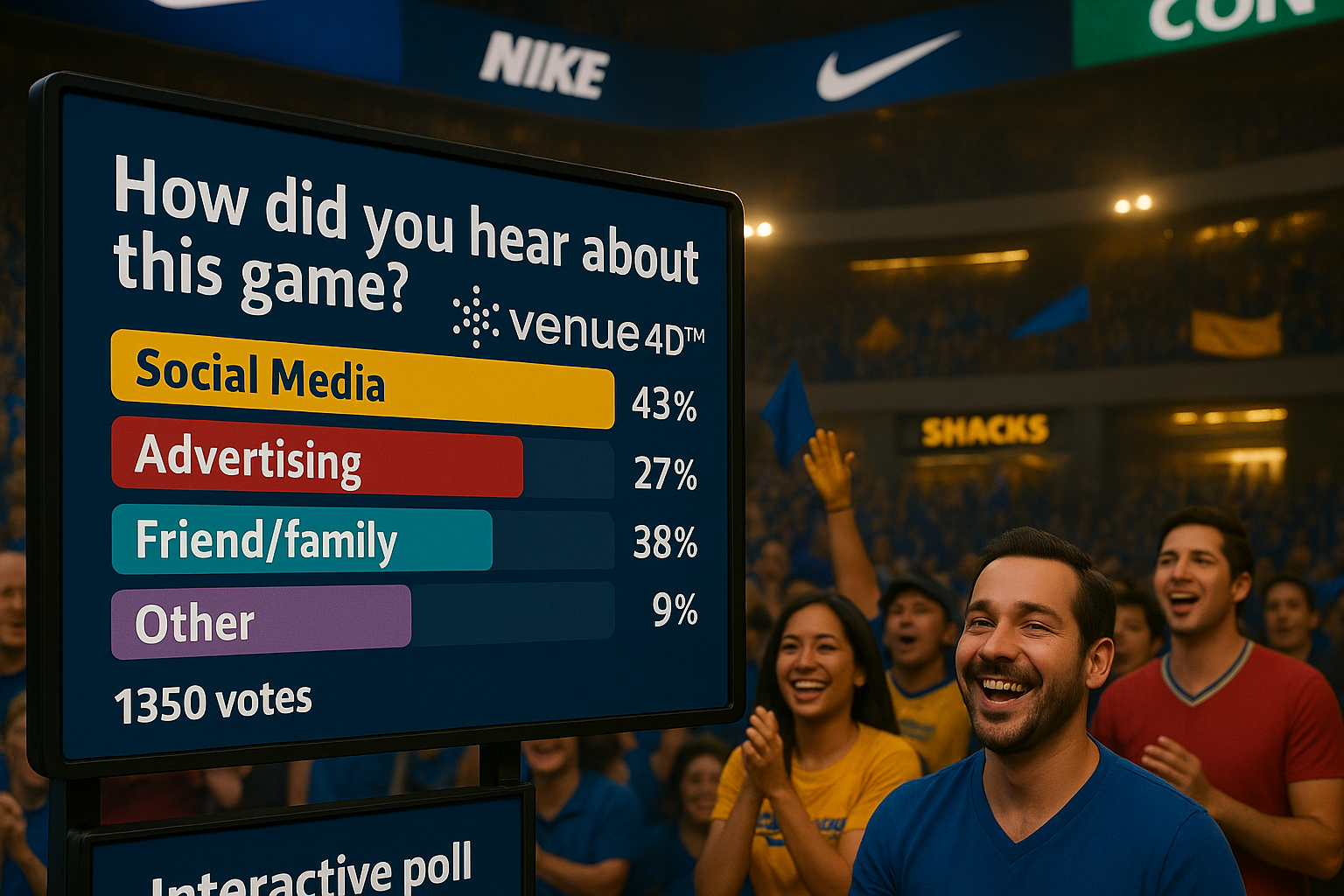.jpg?width=1024&height=559&name=unnamed%20(1).jpg)
Dynamic Pricing Strategies: A Roadmap to Enhanced Revenue
In today's fast-paced business landscape...
Static pricing models are giving way to more dynamic and agile strategies that respond to the ebb and flow of demand. For venues and event organizers aiming to boost their revenue, dynamic pricing presents a compelling opportunity. By adjusting prices in response to various factors such as demand, competitor pricing, and consumer behavior, venues can optimize their revenue streams and stay competitive.
The Power of Dynamic Pricing
Dynamic pricing is a practical way to optimize your venue's earning potential. Unlike traditional pricing strategies that remain constant regardless of market conditions, dynamic pricing enables real-time adjustments. This adaptability is crucial in sectors like sports, entertainment, and hospitality, where demand can fluctuate significantly.
Consider the ticket pricing for a Saturday rivalry game versus a midweek non-conference game. venue4D™ can extend that same principle to sponsorships—letting sponsors pay more for visibility during marquee games or primetime slots, while keeping lower-demand times accessible to emerging brands.
Why Dynamic Pricing Works for Venues
Real-Time Revenue Optimization
At its core, dynamic pricing leverages real-time data to adjust prices in response to current market demands. This approach ensures that venues can maximize their revenue by capitalizing on peak times when demand—and consumers' willingness to pay—is highest.
During high-engagement moments—such as a last-minute field goal attempt—venue4D™ can trigger premium sponsor overlays or interactive polls. These assets justify a higher price point due to peak fan attention.
Enhanced Customer Engagement and Lead Gen
By offering pricing that reflects real-time demand and customer preferences, venues can enhance customer satisfaction and engagement. Engaged customers are more likely to become repeat customers and generate valuable leads through word-of-mouth and social sharing.
For instance, fans choosing a 'Pick the Song' poll sponsored by a brand create both engagement and new ad inventory. That interaction can be priced dynamically—charging more when participation spikes.
Real-World Success: Case Studies and Examples
Consider how major sports leagues, such as the NBA and NFL, utilize dynamic pricing to fill more seats by offering lower prices during off-peak games and maximizing profits for high-demand matches. These strategies have led not only to increased ticket sales but also to enhanced fan experiences as venues become more accessible.
How venue4D™ Supports Dynamic Pricing
venue4D™ helps venues unlock dynamic pricing in sponsorships. Instead of selling a single static scoreboard ad for a flat fee, venues can rotate multiple sponsor graphics or interactive games in real time. A sponsor might pay a premium for exclusivity during halftime or for placement during a high-profile matchup against a rival, while other sponsors opt for more economical slots. This mirrors the same flexible logic used in dynamic ticket pricing.
Crafting Your Dynamic Pricing Strategy
Data is Key
Effective dynamic pricing relies heavily on data. Venues should collect and analyze data on customer behavior, purchasing patterns, and external factors, such as competitor pricing and market trends.
Use Smart Technology
Leverage technology platforms that can automate pricing updates and provide insights into consumer behavior. venue4D™ enhances engagement and revenue through its real-time 3D graphics, interactive experiences, and SMART-templates, enabling venues to keep their content dynamic and tailored to audience demands.
Because these assets are modular and easily interchangeable, venues can offer sponsors short-term packages—such as a single game or even a single quarter—priced according to demand. That creates new pricing tiers that wouldn’t exist with static assets.
Overcoming Challenges
Dynamic pricing is not without its challenges. It requires a robust infrastructure to handle real-time data and pricing models. Moreover, customers may perceive price fluctuations negatively if not communicated well. Clear communication and customer education about the benefits and reasons behind dynamic pricing are crucial.
Conclusion: Embrace the Future
Dynamic pricing strategies are no longer just about ticket sales—they’re about every revenue stream a venue touches. By applying dynamic pricing to both tickets and sponsorship inventory, venues can maximize profits while making experiences more accessible to fans and attractive to brands.
With venue4D™, you can transform static sponsor assets into flexible, high-value inventory that scales with demand. Whether it’s rotating digital overlays, interactive fan games, or real-time polls, venue4D™ gives you the tools to monetize every moment.
Are you ready to future-proof your revenue strategy? Let’s redefine what dynamic pricing can mean for your venue, your sponsors, and your fans.
Visit https://www.venue4d.com to learn more.


